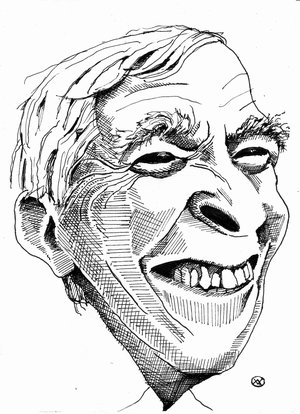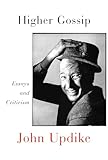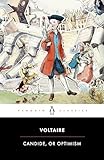 |
| Drawing by Bill Morris |
John Updike drew the title of his 1983 essay collection, Hugging the Shore, from his analogy that “writing criticism is to writing fiction and poetry as hugging the shore is to sailing on the open sea.” To assess aesthetic and stylistic merit was, in other words, a guarded, temperate activity, not exacting the skill, audacity, and celerity of judgment that creative writing did of novelists and poets. Sailing on the open sea cemented Updike’s literary reputation, for readers and critics admired the local color, minimalist aesthetic, and tonal immediacy with which he wrought wry, empathic portraits of middle America, middle age and its crises, and the middlebrow, most famously in the “Rabbit” tetralogy, which traces the lives, loves, and losses of hapless former high school basketball star Harry “Rabbit” Angstrom over four decades. Rabbit and his fellow literary characters — the coy Witches (later Widows) of Eastwick, for example — were fabled and fallible, their creator ever casting a more sensitive than censorious eye upon their foibles. Yet Updike took reviewing just as seriously, as his sheer output of ten essay collections shows, and he did it incomparably well. Hewing to strict principles of ethics, understanding, and citation of texts, which he detailed in Picked-Up Pieces, he contributed more reviews to The New Yorker than any other critic in his lifetime, garnering the National Book Critics Circle Award for Criticism.
 The sensibilities he developed as a novelist and poet, perspicacity and a genial appreciation for the creative process (“the first flush of inspiration, the patient months of research and plotting,” “creation’s giddy bliss,”) meet with stylistic temerity in his criticism, countering what he wrote about hugging the shore. His gentle, measured voice and daring opinions inform his sixty-first book, Higher Gossip, a posthumous compendium of literary tributes, essays, gallery reviews, poems, and speeches that Updike’s widow and literary executor, Martha, and Library of America editor Christopher Carduff culled from meticulously revised printouts that the author sorted into shirt boxes and deposited in a Harvard University archive. Drawn mostly from reviews from The New Yorker, The New York Review of Books, and The New York Times Book Review, and forewords to classics or fine editions of his own work, the collection focalizes Updike’s mid-to-late career as a man of letters. It also foregrounds his secondary reputation as a consummate art critic.
The sensibilities he developed as a novelist and poet, perspicacity and a genial appreciation for the creative process (“the first flush of inspiration, the patient months of research and plotting,” “creation’s giddy bliss,”) meet with stylistic temerity in his criticism, countering what he wrote about hugging the shore. His gentle, measured voice and daring opinions inform his sixty-first book, Higher Gossip, a posthumous compendium of literary tributes, essays, gallery reviews, poems, and speeches that Updike’s widow and literary executor, Martha, and Library of America editor Christopher Carduff culled from meticulously revised printouts that the author sorted into shirt boxes and deposited in a Harvard University archive. Drawn mostly from reviews from The New Yorker, The New York Review of Books, and The New York Times Book Review, and forewords to classics or fine editions of his own work, the collection focalizes Updike’s mid-to-late career as a man of letters. It also foregrounds his secondary reputation as a consummate art critic.
The hieratic art critiques in the “Gallery Tours” section of Higher Gossip resonate long after their initial reading both for the shrewd formal analyses of line, color, and direction, and for the able mining and interweaving of curatorial notes into each piece. By turns coruscating and charming, Updike weighs the ideal perspective from which to gaze at Tilman Riemenschneider’s limewood statue of the Virgin and Child (best “to place her feet level with my eyes, so closely that, looking upward, I create steep perspectives wherein hands, drapery, and the two holy heads achieved a dramatic, foreshortened conjunction”); reads the sculptor’s male statues as “an attempt to express spirituality while acknowledging the heightened awareness of human individuality that came with the Renaissance,” and considers whether color amplifies “the seductive persuasiveness of statuary.” He contrasts Egon Schiele’s etiolated male nudes with his healthier, more seductive females. He traces the novelty of El Greco’s craft (“religious images designed to be seen in a church’s dim candlelight; flattened space, [and] visionary mode of attenuated anatomy,”) and its influence on Delacroix, Sargent, Cézanne, and Matisse. The essays will inspire vicarious thrills in readers who have not seen the shows under review, while illuminating those readers have seen. To my mind, the meditations on Seurat’s figure studies for “A Sunday Afternoon on the Island of La Grand Jatte,” which I saw at the Museum of Modern Art in Fall 2007, were especially apt in characterization and analysis. While Updike graciously overlooks the chilling emptiness that Seurat’s streamlined, faceless figures exude, he unveils the artist’s material craft, the Conté crayons and handmade French Michallet paper that shaped his shading and Pointillist techniques.
 This isn’t to say that the occasional personal bias doesn’t peer at readers from between the judicious shades of these commentaries. Among Dutch Baroque painters, Vermeer categorically trumps Pieter de Hooch in Updike’s view, and a Hartford exhibit can’t upend that conviction. De Hooch’s “brushstrokes are scratchy, his colors brownish and murky, and his compositions haphazard when viewed with Vermeer’s pellucid and exquisitely rigorous canvases in mind. Compared with Vermeer, de Hooch does not draw well, let alone paint with the younger man’s serene rapture of weightless touch and opalescent color.” What about taking de Hooch on his own terms rather than comparing him to another Dutch master, or considering the trajectory of his artistic enterprise, as Updike does with Van Gogh, a reader might ask? Why not celebrate the elegant linearity of “Couple With Parrot,” or the warm tonality of “Woman and Girl in the Yard”? That these pieces invite such polemicism, however, is precisely their appeal. Like the reviews New Yorker art critic Peter Schjeldahl pens for his column, “The Art World,” these essays are learned, sagely voiced, and gracious, even when Updike’s personal taste is clearly at odds with an artistic technique or a curatorial layout. Writer and translator Wyatt Mason, in a Harper’s essay on Updike’s 2007 collection, Due Considerations, and on his critical practice writ large, posed the question of whether “the true critic, like a unicorn or a yeti, must reside in the imagination.” “Gallery Tours” affirms their terrestrial existence in Updikean form, as true criticism here navigates the open sea in its graceful marriage of candor, reason, and research.
This isn’t to say that the occasional personal bias doesn’t peer at readers from between the judicious shades of these commentaries. Among Dutch Baroque painters, Vermeer categorically trumps Pieter de Hooch in Updike’s view, and a Hartford exhibit can’t upend that conviction. De Hooch’s “brushstrokes are scratchy, his colors brownish and murky, and his compositions haphazard when viewed with Vermeer’s pellucid and exquisitely rigorous canvases in mind. Compared with Vermeer, de Hooch does not draw well, let alone paint with the younger man’s serene rapture of weightless touch and opalescent color.” What about taking de Hooch on his own terms rather than comparing him to another Dutch master, or considering the trajectory of his artistic enterprise, as Updike does with Van Gogh, a reader might ask? Why not celebrate the elegant linearity of “Couple With Parrot,” or the warm tonality of “Woman and Girl in the Yard”? That these pieces invite such polemicism, however, is precisely their appeal. Like the reviews New Yorker art critic Peter Schjeldahl pens for his column, “The Art World,” these essays are learned, sagely voiced, and gracious, even when Updike’s personal taste is clearly at odds with an artistic technique or a curatorial layout. Writer and translator Wyatt Mason, in a Harper’s essay on Updike’s 2007 collection, Due Considerations, and on his critical practice writ large, posed the question of whether “the true critic, like a unicorn or a yeti, must reside in the imagination.” “Gallery Tours” affirms their terrestrial existence in Updikean form, as true criticism here navigates the open sea in its graceful marriage of candor, reason, and research.
By contrast, if there’s an adherence to the shore in Higher Gossip, it’s woefully on view in the literary tributes section, “Lives and Laurels.” Updike has professed admiration for Søren Kierkegaard in interviews, but here the philosopher becomes almost fey, living “in the toy metropolis of Copenhagen, a little man with a dandy’s face” and an “extraordinary, insinuant voice, imperious and tender, rabid and witty.” Kierkegaard is lionized for his “heroism in facing down the imperious tradition of German idealistic philosophy,” too. Likewise, Ernest Hemingway (“a bearish celebrity” whose “work remains a touchstone of artistic ardor and luminously clean prose”), Kurt Vonnegut, Raymond Carver (“produced stories of exquisite directness, polish, and calm that sit in the mind like perfect porcelain teacups”), and others receive equally encomiastic tributes. Taken together, these unequivocal pabula approach an idolization rather out of keeping with Updike’s well-tempered critical style. Had he lived to select the essays, this section may have been more representative of the balance and plasticity of his critical faculties, both exacting and encouraging.

 Similarly, the essay “Humor in Fiction” is a curiosity. It mines the most tired passages from classics like Don Quixote and Candide, only to blur the sight lines between irony and humor, which is described, varyingly, as “the misapplication of momentum,” “states of mind that appear not merely various but even opposite,” “mock penalties,” and “rubbery” characters who suffer no lasting damage, all considered against the backdrop of veritable danger. Where Updike reads comic brio, in Huckleberry Finn’s unwillingness to characterize Jim, a former slave, as a human being, for example, others may read either gallows humor or satire carefully masking deeply engrained pain. Given that subtle jocularity is one of Updike’s novelistic strengths, it’s strange to see this essay miss its mark.
Similarly, the essay “Humor in Fiction” is a curiosity. It mines the most tired passages from classics like Don Quixote and Candide, only to blur the sight lines between irony and humor, which is described, varyingly, as “the misapplication of momentum,” “states of mind that appear not merely various but even opposite,” “mock penalties,” and “rubbery” characters who suffer no lasting damage, all considered against the backdrop of veritable danger. Where Updike reads comic brio, in Huckleberry Finn’s unwillingness to characterize Jim, a former slave, as a human being, for example, others may read either gallows humor or satire carefully masking deeply engrained pain. Given that subtle jocularity is one of Updike’s novelistic strengths, it’s strange to see this essay miss its mark.
Given how diligent a reader and writer Updike remained throughout his life, annotating with extensive marginalia the text and footnotes of galleys he received for review, revising his published pieces for new collections until his death, he might have excised some of these less lively pieces, keeping one if it had “carefree bounce, snap, [an] exuberant air of slight excess,” and “the forward momentum of a certain energized weight” he ardently sought and achieved in his prose. The choice may have concerned him as it did Charles Baudelaire, who laid out anthologies specifically for the continuity between poems, or Paul Simon, who carefully considers the juxtaposition of songs when determining track listings for his recordings. We readers cannot know, but we’ll be privileged to see more of the criticism that charts the open sea, as Carduff’s introduction notes that additional art essays will be compiled, coupled with full-color illustrations, and published. Together with the “Gallery Tours” here and the literary criticism collected in earlier volumes, these will be evidence enough of Updike’s veritable departures from the haven he once envisioned criticism to be.








